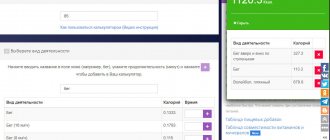In order to increase the intensity of your training for mass gain, it is not enough to lift heavy weights and turn up the volume of the music. The psychological attitude is important, but to increase the load it is necessary to combine exercises in a special way and adjust the loads.
How to calculate the intensity of a bodybuilding workout - and how to properly increase it to accelerate muscle growth? In the material below we will talk about why you need to train hard, how to make your training more intense - and how not to drive yourself into a dead end.
Methods for increasing intensity
There are many different ways to make your workout more challenging. We will look at the safest and most effective techniques for increasing the load. All of them are used in compliance with the correct exercise technique:
Increase in working weight
Everything is simple here - you need to regularly increase the working weight in the exercises. Let's imagine that in your first workout you pressed a 50-kilogram barbell for 10 reps in three sets. The exercise was done technically and without jerking. In the next workout, you will have to increase the weight of the barbell by 5 kilograms and try to do 3 sets of 10 repetitions. You may not have the strength to do 10 reps of each set right away.
In the first approach you will do 10 reps, in the second 9, and in the final only 7. This is how it should be. In the next workout, you will again take a barbell weighing 55 kilograms and already do 10, 10, 8. Only when you were able to do 10 repetitions in each approach with the correct technique can you increase the working weight.
// How to choose a working weight?
Reducing rest time
If you reduce the rest time between sets, the exercise will be harder, which means the workout will be more intense. Remember that rest is primarily needed to restore breathing, and not to allow muscles to relax. Therefore, during your rest, focus on your feelings. If your breathing has calmed down, it’s time to start the exercise.
Supersets
Superset training is the practice of performing two or more exercises without rest one after the other. They come in two types: for one muscle group and for antagonist muscles. In the first case, you do exercises to maximally load one muscle. For example, first perform a seated dumbbell press, and then do lateral raises. Both movements are aimed at pumping the deltoid muscles.
Supersets for antagonistic muscles are combinations of exercises for muscles that perform opposite functions. An example of such a superset would be a barbell curl combined with a French press to pump up the triceps.
Doing supersets is useful for increasing training intensity and breaking through plateaus. Muscle tissue will not be ready for a new load and will thereby receive an incentive to grow.
Drop sets
This is another popular way to load a muscle group and achieve its maximum hypertrophy. The idea is to reduce the working weight per set as muscle fatigue occurs.
Let's say you start squatting with a 32 kilogram kettlebell. As soon as you feel that you cannot continue to perform the exercise with the correct technique, then take a lighter weight and squat again without rest until muscle failure occurs.
Forced reps
To do forced reps, you need a partner. It helps slightly when you cannot lift the weight independently and technically. For example, you are performing a bench press, and by the end of the set you have run out of strength. With the help of a partner, you can perform 1-2 more repetitions to give your muscles more stress.
Forced reps are essentially drop sets. Only the weight remains the same, and the load decreases due to the help of a partner. The forced repetition method is also used to achieve muscle failure.
Additional material for this article
Approaches and repetitions If your goal is to increase strength, then you will need fewer repetitions; if we are talking about relief, weight loss, then this requires a large number of repetitions. The number of approaches and repetitions is not an axiom. Split program Training different parts of the body on different days allows you to train 5 - 6 days a week without overtraining and avoiding injuries. Top 5 most popular glucometers Today, in any pharmacy you can find a large assortment of glucometers, but choosing the most accurate and reliable one is very difficult. Manufacturers of sports nutrition in Russia The list of the best manufacturers of sports nutrition today is not so long. It is very difficult to gain consumer trust, because, as you know, reputation takes years to develop. Fitness club with a swimming pool for intense training We have compiled a list that presents the best fitness clubs in Moscow, ranging from inexpensive gyms to premium fitness. Legs hurt from a large amount of work. Legs are our support and movement. Strong and healthy legs are the key to a long and active life. Your task is to carefully monitor any unpleasant or painful sensations and constantly pay attention to training your legs.
Restriction of rest
Recreation outside the gym should definitely be encouraged. But during the training process, the concept of rest is no longer so clear. The pause between sets should be used for recovery before the next set, and not for socializing, selfies or other relaxation. And the amount of time needed for sufficient recovery varies from person to person.
Rest between sets can vary from exercise to exercise and is almost always consistent with your training goals. For example, active movements such as squats and deadlifts typically require more time to adequately recover, regardless of the training task.
One of the best ways to increase intensity from set to set is to pay close attention to your rest periods. In bodybuilding, it's not always about how much weight we can lift. Also valuable is the intensity we end up creating.
Types of HIIT
The training program for an ordinary person is almost always built individually. According to the HIIT method, it doesn’t really matter what you do: jump rope, use an exercise bike, run in the park or on the track in the gym. The main thing is to alternate active efforts at the limit of your capabilities with periods of rest, carefully monitoring your pulse. In one five-minute session it is permissible to combine various types of interval training: cardio and strength training, running and jumping, stretching and squats with weights.
Tabata Protocol
This type of interval training has a clear timing: 20 seconds of maximum load alternated with a 10-second rest. One approach or circle takes 4 minutes, during which you need to perform 8 sets of any exercise: push-ups, pull-ups, squats, etc. A warm-up is mandatory to warm up and prepare the muscles.
Gerschler method
The effectiveness of interval training is determined by your heart rate. The heart rate accelerates to 80-85% of the maximum, and then 2 minutes are given to rest, during which the heart rate should recover to 120 beats in 60 seconds. The sets continue until the heart rate stops falling during rest. This is a signal to stop training. On average, the duration of a lesson is 20-30 minutes.
Fartlek
Group interval sprint based on competition using a standardized protocol:
- 10 minutes warm-up, jogging;
- 10 minutes of running at high speed;
- 5 minutes of brisk walking to relax;
- 100 m straight, race;
- 100 m race on a slope, uphill;
- A 5-minute cool-down walk takes the body out of stress.
Exercise bike
This type of HIIT involves:
- 5 minutes of warm-up in a calm mode;
- 30 seconds – maximum speed at high resistance;
- 1 minute – rest at a medium or slow pace with minimal resistance.
Beginners should not choose complex sets of exercises. This will not be of particular benefit, since the body needs time to adapt to the stress. For the first month, running, swimming, jumping rope, cycling or orbitrek are suitable. Then classes can be diversified with weights, alternating work on machines and strength exercises.
Depending on the desired result: lose weight, build muscle mass or increase endurance, you can choose interval training with an emphasis on cardio, strength or mixed.
Each professional has his own HIIT system in his arsenal, developed taking into account personal experience and based on the level of preparedness of the target audience. Therefore, it is more comfortable and safer for a beginner to exercise under the supervision of a trainer, at least until the body is in minimally good physical shape. Then you can continue studying at home.
How to calculate
To plan the training process, it is important to make adjustments for the age and gender of the person. It has been scientifically proven that the volume of muscle tissue in women is in the range of 32-35% of their body weight, and in men this figure is about 40%. But at the same time, the fairer sex has 10% more adipose tissue than the male sex.
It is also impossible not to take into account this fact: in the presence of significant physical activity and long-term training processes in women, the menstrual cycle can increase to 36-42 days.
Regardless of what sport a person is involved in, it is important not to exceed the maximum permissible heart rate, which is calculated using a very simple formula: 220 – the athlete’s age in years.
For example, in cross-country skiing, the number of heart beats per minute indicates the degree of exertion:
- 120-140 beats/min – low.
- 140-160 beats/min – average.
- 160-175 beats/min – almost competitive.
- 175-190 beats/min – competitive.
- 190-200 beats/min – maximum.
Pre-charge
Whatever intensity techniques you use, they may have little effect if the body is not willing to perform them. To ensure that fatigue does not limit performance, weakened muscles do not interfere with maximum muscle contraction and anaerobic performance, and dehydration does not reduce endurance, serious athletes pay special attention to the pre-workout complex.
We will never know what our body is truly capable of until the conditions for the desired training experience are created. Unfortunately, many people fail to reach their full potential. And it's not for lack of trying. No matter how hard they try, many lifters still can't get to the final reps. High-quality preparation will help you cope with this, in particular, do not ignore special pre-workout complexes.
What exercises to do
It’s easy to try your hand at HIIT using the Tabata protocol. One cycle takes 4 minutes, and the heart rate monitor will show you how many cycles in a row you can complete until you reach your peak estimated heart rate. You shouldn’t immediately grab dumbbells, kettlebells, or try to master burpee exercises if you don’t have the proper preparation. The simplest elements, done at a high tempo, will do an excellent job of accelerating the heart rate:
- jumping rope, performed in different modes and combined with alternating knee raises or high jumps;
- running in place;
- squats and half-squats, which alternate with jumps;
- simple and oblique twists from a lying, standing, sitting position;
- simplified push-ups from the knees.
Scientific background
In a professional sports environment, interval training has long established itself as a quick and safe method to get the body into the desired shape. Coaches use this kind of “buildup” to prepare the athlete for competitions, after which they return to the normal pace of training. The essence of the method is that training using the HIIT system increases the frequency of contraction of the heart muscle to 80% of the maximum, taking the body out of its stable comfort zone for a few seconds. As a result, endurance increases significantly.
Research on the effects of HIIT on humans has been conducted all over the world: in Japan, the USA, Great Britain, Brazil, and Russia. Both athletes and untrained people leading a passive lifestyle took part in the experiment. Scientists have confirmed that short interval training allows you to burn 6 times more calories and body fat than regular fitness classes at a steady pace. The result of the research was the adaptive HIIT program.
Focusing
The gym is not a place to play. It is important to focus on the process and be aware of the end result.
True training intensity cannot be achieved without extreme concentration. To focus thinking, an athlete must come to the gym already configured for productive work.
Ensuring complete concentration is very difficult. We tend to overreact to external stimuli and are easily distracted. But absolute concentration can still be achieved. It is psychologically impossible to focus on 2 or more things at the same time. We need to work on increasing the amount of time we can focus on important tasks.
For example, when full focus is applied for the entire duration of a heavy set of squats, then we learn the true meaning of intensity. Approach each set with the sole goal of completing each repetition; Feel the muscles working from the first to the last rep, keep your mind focused on pushing the weight as hard as you can.
What are the benefits of interval training?
HIIT is among the TOP fitness trends in 2022 and 2022. Thanks to this method, the fat burning process continues even after the end of the lesson for a period of 5 to 24 hours. The American College of Sports Medicine (ACSM) has concluded that metabolic acceleration occurs after the end of training, and the effect continues to grow with each subsequent session.
For those who have lost weight using a calorie counting system at least once in their life, the principle of the “swing” is well known, when the body adapts to a decrease in kcal consumption and the weight stops moving down. In this case, it is recommended to alternate between fasting and overeating. HIIT works the same way. Interval training helps:
- quickly “dry” the body, replace fat deposits with muscle mass;
- improve the body’s energy reserves several times;
- increase endurance and strength;
- maintain normal weight, even with increased calorie intake;
- strengthen the heart muscle;
- reduce cholesterol and sugar;
- improve immunity, eliminate the development of ischemia and type 2 diabetes;
- get rid of overwork and depression;
- increase testosterone and growth hormone.











